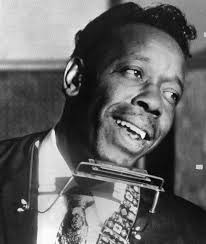Introduction
Slim Harpo, born James Moore in 1924, remains one of the most distinctive voices in blues history. With his laid-back drawl, infectious grooves, and masterful harmonica playing, he became a leading figure in the swamp blues style that emerged from Louisiana. His music effortlessly bridged blues, R&B, and rock ‘n’ roll, influencing artists ranging from the Rolling Stones to The Kinks. In this post, we’ll explore five of his most essential tracks—songs that define his legacy and showcase his unique sound.
1. “I’m a King Bee” (1957)
Slim Harpo’s debut single, “I’m a King Bee,” is one of the most iconic blues songs of all time. With its slow, slinky groove and sensual lyrics, it captures the essence of swamp blues. The song was famously covered by the Rolling Stones on their debut album, introducing Harpo’s music to a new generation of rock fans. His drawling vocal and subtle harmonica create a hypnotic atmosphere that’s as raw as it is smooth.
Why it’s essential: This track is a blues standard and a declaration of Slim Harpo’s talent from the very beginning.
2. “Rainin’ in My Heart” (1961)
A more tender and melodic offering, “Rainin’ in My Heart” showcases Harpo’s ability to blend blues with pop sensibilities. The lyrics express heartbreak with simple yet powerful imagery, and the arrangement—with its gentle horn section and soulful harmonica—adds emotional weight. This song climbed the R&B and pop charts, proving that blues could resonate with mainstream audiences.
Why it’s essential: A crossover hit that demonstrated Harpo’s versatility and emotional depth.
3. “Baby Scratch My Back” (1966)
“Baby Scratch My Back” was Harpo’s biggest commercial success, reaching No. 1 on the R&B chart and breaking into the Billboard Hot 100. It’s funky, minimal, and irresistibly catchy. The groove is driven by a repetitive guitar riff, snappy percussion, and Harpo’s trademark harmonica licks. The song’s playful lyrics and relaxed delivery make it a standout in his catalog.
Why it’s essential: A chart-topping hit that showed blues could be danceable and fun without losing its roots.
4. “Shake Your Hips” (1966)
This hypnotic blues shuffle became another of Harpo’s most influential recordings. With its call-and-response rhythm and simple dance instructions, “Shake Your Hips” would later be famously covered by the Rolling Stones on their Exile on Main St. album. It’s a masterclass in groove and restraint, demonstrating Harpo’s power as a bandleader and performer.
Why it’s essential: A funky, influential tune that proves less is often more in blues music.
5. “Te-Ni-Nee-Ni-Nu” (1959)
Perhaps the most fun song in Slim Harpo’s discography, “Te-Ni-Nee-Ni-Nu” is an upbeat number with a boogie-woogie feel and nonsense lyrics that invite the listener to dance. It’s pure joy from start to finish, filled with bouncing rhythms and a light-hearted mood. Though not as widely known as some of his other hits, it’s a hidden gem that captures Harpo’s playful side.
Why it’s essential: A joyful deep cut that shows Harpo could entertain just as well as he could emote.
Conclusion
Slim Harpo’s music remains timeless—equal parts swampy, soulful, and subtly sophisticated. These five songs offer a perfect introduction to his work, highlighting his signature harmonica style, relaxed vocal delivery, and uncanny ability to craft songs that stick with you. Whether you’re new to blues or a longtime fan, revisiting Harpo’s music is always a rewarding journey. His legacy lives on in the countless artists he inspired and the grooves that still echo through modern music.


Comments are closed